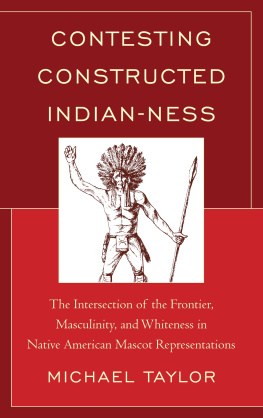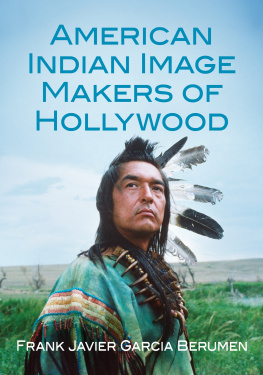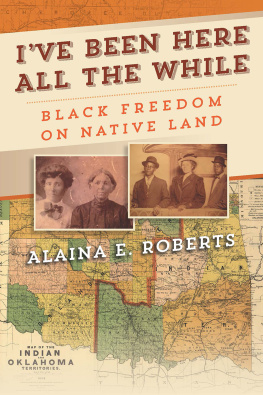Contesting Constructed Indian-ness
Contesting Constructed Indian-ness
The Intersection of the Frontier,
Masculinity, and Whiteness in
Native American Mascot Representations
Michael Taylor
LEXINGTON BOOKS
Lanham Boulder New York Toronto Plymouth, UK
Published by Lexington Books
A wholly owned subsidiary of The Rowman & Littlefield Publishing Group, Inc.
4501 Forbes Boulevard, Suite 200, Lanham, Maryland 20706
www.rowman.com
10 Thornbury Road, Plymouth PL6 7PP, United Kingdom
Copyright 2013 by Lexington Books
All rights reserved. No part of this book may be reproduced in any form or by any electronic or mechanical means, including information storage and retrieval systems, without written permission from the publisher, except by a reviewer who may quote passages in a review.
British Library Cataloguing in Publication Information Available
Library of Congress Cataloging-in-Publication Data
Library of Congress Cataloging-in-Publication Data Is Available
ISBN 978-0-7391-7864-5 (cloth : alk. paper) -- ISBN 978-0-7391-7865-2 (electronic)
 TM The paper used in this publication meets the minimum requirements of American National Standard for Information Sciences Permanence of Paper for Printed Library Materials, ANSI/NISO Z39.48-1992.
TM The paper used in this publication meets the minimum requirements of American National Standard for Information Sciences Permanence of Paper for Printed Library Materials, ANSI/NISO Z39.48-1992.
Printed in the United States of America
Contesting Constructed Indian-ness
The Intersection of the Frontier, Masculinity, and Whiteness in Native American Mascot Representations
I sat midway up in the bleachers of the school gymnasium, in the eighth graders section of seats, for we had been seated by grade level by the teachers and staff of the Salamanca City School District Junior-Senior High School (SHS) we attended. We students had been gathered together for an event and were waiting in anticipation for the spectacle to begin. The gathering of students was part of a ritual that honored the Salamanca High School Warriors athletes. The event was a pep rally for the high schools football team and their upcoming contest with an archrival as a home game that was to be played under the lights on Saturday night, at Veterans Memorial Park, the home field for the Salamanca High School (SHS) Warriors.
The cheerleaders gathered together and spouted their chants and rhymes in support of the team. These girls had congregated at the far end of the gym from where my section was sitting in the stands; those doors behind them went into the girls locker room and were diagonally opposite to us sitting by the boys room entrance in the gymnasium floor layout. That particular entrance was to my left and below me from where I had been sitting in the gym. Across from us, the rest of the high school grades sat along the south side bleachers. As the girls cheered and shook their pom-poms in readiness and anticipation of the event, the teachers encouraged the students in the bleachers to stand and honor the squad of players. Then, from behind the doors, the varsity football team entered to jog around the floor of the gym to the applause of the student audience.
In a small town such as this, sports, particularly football, serves as a common ground for students, parents, student-athletes, and community. Football has such a national scope of it as an American founded sport that few other sports tend to rival its staging. It is the largest spectator sport as its weekly broadcasts of the professional level of play is a high ratings achiever for network television. In the small town atmosphere of this place, the game of football is very nearly hallowed by its meaning of tradition, and of the generational investment of the community, for Warrior teams both past and present (Rychcik and Edstrom 2001).
Wearing their home game red-colored football jerseys the team ran a lap around the gym staying at the perimeter of the floor before the gathered assembly of the rest of the junior-senior high populace, then slowed their procession to mount a stage that had been erected for the occasion by the maintenance staff, built next to where they had entered the gym. The team had gathered on this small stage and they were standing up, and now were applauding along with the cheerleaders and the audience. The cheerleaders had not left the girls locker area entryway, as they typically had in the past, to line the floor of the gym on either side in front of the students in the bleachers as was usual after the team had entered onto the court. They were raising another cheer when someone came out from behind the doors dressed in a white buckskin leather outfit and a long feathered headdress.
To my disbelief of the visual presentation or in awe at the supposed impossibility of someone dressing in feathers (Bird 1998) and being put on display in front of these particular students, in this fashion, in this school, in this city, on this reservation of the Seneca Nation of Indians, such a display seemed improbable. The young man, probably a high school junior, ran a lap around the gymnasium floor, all the time waving to the crowd with one hand. The fringed leather cuff around his wrist shook with the strands of leather fringe when he waved. In the other hand he held a tomahawk with which he waved at the audience too as he passed by them. The smile he had on his face as he turned the corner to run past the section where I sat seemed a real one. He continued on his route, encouraged to do another lap as he neared the finish of his first by the cheerleaders and from the platform holding the football team. The student section nearest him where he started out on his circuit was where the senior class students sat. I noticed some Seneca guys stand up and they had their hands cupped around their mouths as they shouted something to the young man in cultural drag. Other students of his same ethnicity began to shout things at him as he passed around again. I was silent. The scene had overloaded my brain in a sense because I could only watch as he rounded the floor.
Such representations of Indian-ness have become multitude in the world of sports and athletics in the United States. This example in particular is troubling in terms of its content. By having the Native American participate in this spectacle as performer, it represents a form of institutional racism where the real acts out as the imagined and thus a juxtaposition occurs where the fiction becomes the reality and is substituted for the authentic. Whether it had occurred as Levi Walker, Jr., Ottawa/Odawa Nation, role playing as Chief Noc-A-Homa for the Atlanta Braves baseball team in the 1980s or the descendants of Seminole leader Osceola who carry his name as their family surname acquiescing with the Florida State University and allowing the on-field mascot to be called Chief Osceola, astride a spotted Appaloosa horse brandishing a flaming war lance in the present. The public display of the faux subsuming the real plays to the ethnic notions of constructed Indian-ness of the popular cultural expectations of white male viewers and consumers of this staged pageantry.
Again as he jogged by my section he looked somewhat puzzled and the smile on his face was not as bright as before. Still he waved to the crowd and the majority of them cheered and applauded the image of the Indian warrior as he made his way around for a third time. This time his smile was barely there as he went by my section once again, perhaps as more confusion set in his mind. As he ended his third lap he ducked back into the locker doors and out of sight of the crowd in the gym. The whole spectacle lasted a bit longer than a minute in length for the young man to make the three trips around the basketball court, but it seemed longer to me for I felt confused as well. What did I just see? Was it really Ike St. Bernard dressed in a white fringed-leather outfit and war bonnet headdress that had run around the gym waving a tomahawk? Did he just finish playing Indian (Deloria 1998:7)? A real Seneca youth, dressing up in Hollywood costume to perform as a live Indian, been presented as a spectacle? It did not seem real but it had just happened. What made him do that? I wondered. When I first saw the Seneca student-as-warrior mascot emerge from behind those gymnasium doors I was taken off guard by the suddenness of the feat and when I saw who the performer was, I thought to myself, Wow, where did Ike get that outfit? Hes not a dancer that I could remember.
Next page









 TM The paper used in this publication meets the minimum requirements of American National Standard for Information Sciences Permanence of Paper for Printed Library Materials, ANSI/NISO Z39.48-1992.
TM The paper used in this publication meets the minimum requirements of American National Standard for Information Sciences Permanence of Paper for Printed Library Materials, ANSI/NISO Z39.48-1992.